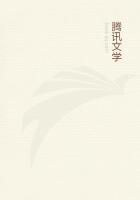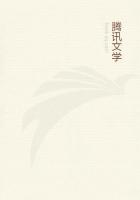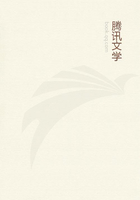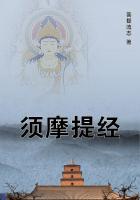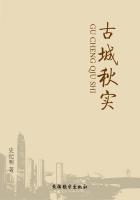[531]--The following is Barros's account of this affair of "Cide Mercar."After mentioning the terms of the treaty between Vijayanagar and Bijapur,one of which provided for the reciprocal extradition of criminals and debtors,he writes:--"Crisnarao,knowing that he could catch the Hidalcao in this trap,called a Moor by name Cide Mercar,who had been in his service for many years,and bade him take forty thousand pardaos and go to Goa to buy horses of those that had come from Persia.Crisnaro wrote letters to our Captain ...on purpose so that the affair might become widely known to all.Cide Mercar,either tempted by the large sum of money in his charge,or swayed by a letter which they say was sent to him by the Hidalcao,when he arrived at a TANADARIA called Ponda,three leagues from Goa,fled to the Hidalcao from there.The Hidalcao as soon as he arrived sent him to Chaul,saying hat he bestowed on him this TANADARIA as he was an honourable man of the family of Mahamed ...;but in a few days he disappeared from there,and they say that the king ordered his murder after he had taken from him the forty thousand pardaos."[532]--"Madre"stands for Imad,the Birar Sultan;"Virido"for the Barid Sultan of Bidar.I cannot explain Demellyno or DESTUR,unless the former be an error of the copyist for "Zemelluco"as written below,which certainly refers to the Nizam Shah.Several Portuguese writers omit the first syllable of "Nizam"In their chronicles.On p.348below,these names are given as Madremalluco,Zemelluco,"Destuy"and "Virido;"and therefore "Destur"and "Destuy"must mean the Qutb Shah of Golkonda,at that period Sultan Quli.On p.349we have the form "Descar."[533]--For a full discussion of this date see above,p.140.
[534]--See above,p.263,note.His name was Kama Naik (p 329).
[535]--SEUS ALLYFANTES.Perhaps SEUS is a clerical error for SEIS,"six."Barros,in describing the same event,says "sixteen elephants."[536]--See below,p.360,note.
[537]--Probably Ganda Rajah,brother of Saluva Timma,the minister.(See p.284,and note to p.361.)The initial "O"may he the article "The."[538]--The great vassal lords of Madura,who after the fall of the kingdom established themselves as a dynasty of independent sovereigns,descended,so Barradas tells us,from the "Page of the betel"(above,p.230).
[539]--I think that the second C in this name is an error for E,and that "Comarberea"represents Kumara Virayya of Mysore (above,p.269).Later on Nuniz spells the name "Comarberya"(below,p.336).
[540]--Above,pp.40,60,122.
[541]--LADES,for LAUDEIS,quilted tunics,doublets.The word is spelt in other places LAYDES,LAMDES,LANDYS,LAMDYS,and LANDEIS.See note,p.276,above.
[542]--GOMEDARES,probably the modern AGOMIA or GOMIA,"a poignard."Senhor Lopes refers me to Barros,Mendes,Pinto,&c.,where the form used is GUMIA;the word being derived from the Arabic KUMMIYA,which properly means a curved dagger --"UM PUNHAL EM MEOARCO"(MS.in Portuguese,on Morocco,in Senhor Lopes's possession).
[543]--See above,p.270.
[544]--Malliabad,as now called,close to Raichur.The name given by Nuniz I take to represent "Mallia (or Malliya)Banda,"probably the Hindu name.BANDA ="rock.""Malliabad"is the name given by the Musalmans.
[545]--A small copper coin.
[546]--MINGUO,probably MOONG or green grain ("Hobson-Jobson").Ibn Batuta calls it MUNJ,others MUNGO.
[547]--REGATOEES D ARTE.
[548]--The total cavalry and elephants of the different columns enumerated above comes to 32,600and 551respectively.
[549]--Barros has ANCOSTAO,and Correa ANCOSCAO.The latter termination seems the most natural --CAO for KHAN.The name appears to be "Ankus Khan.""Pomdaa"is Pomda or Ponda,close to Goa.
[550]--Dom Guterre de Monroy sailed from Portugal to India in 1515in command of a fleet (Albuquerque,Hakluyt edition,iv.194).In 1516he was in command at Goa during the absence of Governor Lopo Soares at the Red Sea,between the months of February and September,and during that period attacked the Bijapur troops at Ponda,which were commanded by Ankus Khan,with some success (Barros,Dec III.l.i.c.8).Osorio (Gibbs'translation,ii.235)represents De Monroy as a man of a very cruel and licentious disposition.He was married to a niece of the governor.
[551]--They believed,that is,that their prestige would give them great moral superiority over the Hindus.
[552]--This passage is obscure.
[553]--See above,p.327and note.
[554]--The original has CAVAS E BAUDES.The meaning of the last word is not clear.
[555]--AVYAO DE MORRER PEDIDO AUSA DA MORTE.AUSA is perhaps for OUSADIA,"boldness;"and the passage would then mean that since death appeared inevitable they should meet it half-way,and not lazily await it;they should die like soldiers in a charge,not stupidly standing still to be slaughtered.
[556]--"Sufo Larij,"Barros,Dec.III.l.iv.cap.5.Asada Khan's love of intrigue was proverbial amongst the Portuguese of that day.
[557]--COMO QUER QUE ACADACAO TRAZIA QUEM HIA A TERRA.A doubtful passage.
[558]--TOMAMDO A FALLDRA DA SERRA DA BAMDA DO SUL.It would be interesting to learn which range of hills is referred to.
[559]--Salabat Khan.
[560]--See above,p.251,note.
[561]--LLAVAOCAS,for ALAVANCA,a Portuguese word for crowbar still everywhere in Ceylon.
[562]--FRAMGES,I.E.Feringhees,Franks,or Europeans.
[563]--Saluva Timma.
[564]--Rey Daquym,I.E.King of the Dakhan.This evidently refers to the Bahmani king,who was still recognised as titular sovereign,though the whole country had revolted and broken up into five independent kingdoms.For the names that precede this see note to p.325above.

